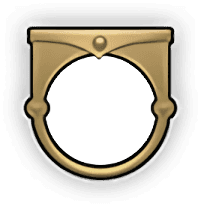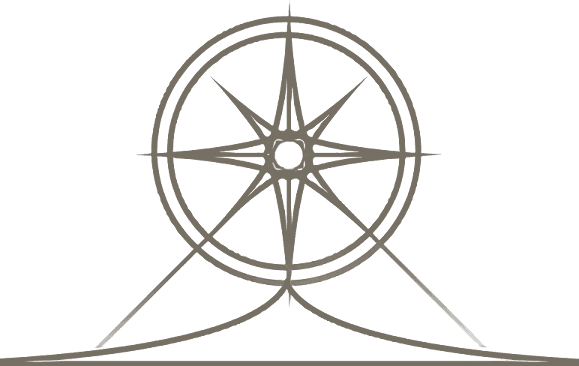Civilizations
Leaders
Introduction
Abraham Lincoln
Alexander
Amanitore
Ambiorix
Basil II
Bà Triệu
Catherine de Medici (Black Queen)
Catherine de Medici (Magnificence)
Chandragupta
Cleopatra (Egyptian)
Cleopatra (Ptolemaic)
Cyrus
Dido
Eleanor of Aquitaine (England)
Eleanor of Aquitaine (France)
Elizabeth I
Frederick Barbarossa
Gandhi
Genghis Khan
Gilgamesh
Gitarja
Gorgo
Hammurabi
Harald Hardrada (Konge)
Harald Hardrada (Varangian)
Hojo Tokimune
Jadwiga
Jayavarman VII
João III
John Curtin
Julius Caesar
Kristina
Kublai Khan (China)
Kublai Khan (Mongolia)
Kupe
Lady Six Sky
Lautaro
Ludwig II
Mansa Musa
Matthias Corvinus
Menelik II
Montezuma
Mvemba a Nzinga
Nader Shah
Nzinga Mbande
Pachacuti
Pedro II
Pericles
Peter
Philip II
Poundmaker
Qin (Mandate of Heaven)
Qin (Unifier)
Ramses II
Robert the Bruce
Saladin (Sultan)
Saladin (Vizier)
Sejong
Seondeok
Shaka
Simón Bolívar
Suleiman (Kanuni)
Suleiman (Muhteşem)
Sundiata Keita
Tamar
Teddy Roosevelt (Bull Moose)
Teddy Roosevelt (Rough Rider)
Theodora
Tokugawa
Tomyris
Trajan
Victoria (Age of Empire)
Victoria (Age of Steam)
Wilfrid Laurier
Wilhelmina
Wu Zetian
Yongle


Porta do Cerco
All units receive +1 sight. +1  Trade Route capacity when a civilization is met. Open Borders with all city-states.
Trade Route capacity when a civilization is met. Open Borders with all city-states.
 Trade Routes are limited to those that pass over water, so João will want to build his cities along the coast to maximize potential trading spots. Further, coastal cities can take full advantage of the Navigation School, giving extra
Trade Routes are limited to those that pass over water, so João will want to build his cities along the coast to maximize potential trading spots. Further, coastal cities can take full advantage of the Navigation School, giving extra  Production towards naval units, extra
Production towards naval units, extra  Science for coast and lake tiles, and extra
Science for coast and lake tiles, and extra  Great Admiral points. Portugal will want to explore the map early to find future sites for Portugal’s Unique Infrastructure, the Feitoria, built by Portugal’s Unique Unit, the Nau. Portugal can use its trading profits to fuel any kind of win – steer clear of wars, though; those ports need to stay open for business!
Great Admiral points. Portugal will want to explore the map early to find future sites for Portugal’s Unique Infrastructure, the Feitoria, built by Portugal’s Unique Unit, the Nau. Portugal can use its trading profits to fuel any kind of win – steer clear of wars, though; those ports need to stay open for business!João was set to marry at sixteen and would have married his first cousin Eleanor of Austria, but his father Manuel stepped in and decided he wanted Eleanor for himself. João was understandably offended, and more than a little upset about the whole ordeal. However, following João’s succession in 1521, he made a strategic marriage to Catherine of Austria, who happened to be the younger sister of his ex-fiancé, Eleanor.
Burned in love, he threw himself into his religion. Significantly, João sponsored humanistic approaches to religion such as the Society of Jesus – the Jesuits. Perhaps less nobly, it was under João that the Inquisition finally arrived in Portugal, with predictable results both in suppressing free inquiry (but also ensuring that Portugal would have no Protestant movement). The Inquisition was designed to punish what the church considered to be problematic or blasphemous, including anything related to witchcraft, bigamy (recall João’s contemporary in England, Henry VIII, and his struggles with the church over his complicated love life), literature that went against the church, and sexual deviancy. João (with the Pope’s permission) appointed his brother Cardinal Henry as his Grand Inquisitor and established branches across Portuguese territories. The Inquisition’s influence bled into other parts of Portuguese culture and daily life. These moves earned João the name “the Pious.”
Rather than conquest through battle, João often used diplomacy and arranged advantageous marriages. His sister Isabella was married to Charles V, the King of Spain and the Holy Roman Emperor, and he married his daughter Maria Manuela to King Philip II of Spain. His son Prince João Manuel married Joan of Spain and their son went onto become King Sebastian I. The common trend here – Portugal securing an independent but closely-allied place in Iberia – should be clear.
João found that the Portuguese’s expansive empire was inefficient, fraught with debt and corruption. Initially, he tried to patch the problems by appointing new governors, thinking that better men would yield better results, but the problem was systemic. Also, sometimes the “fired” governors just didn’t leave.
The real impact of João’s reign was in the expansion of his trade networks. Fortified Portuguese trading camps – feitorias – were established in Mombasa, Mozambique, and other parts of Africa, and Portugal acquired Timor and the Maluku Islands in Southeast Asia, Goa and Sri Lanka in South Asia, and a trade outpost in Nagasaki and Macau in East Asia. Further, Portuguese Brazil was, under João, to become a significant colony. These networks were to move spices, sugar, gold, fragrances, and silk across the world. Less nobly, João also trafficked in enslaved people, prompting the Congolese king Mvemba a Nzinga to write João a scathing letter about the activities of Portuguese slave traders.
Towards the end of João’s reign, he had trouble naming an heir. Of his nine children (born to Catherine), only two survived past childhood, and both died before their father. The throne was ultimately left to his grandson, Sebastian, upon his death in 1557.
Preferences
Preferences
Porta do Cerco
All units receive +1 sight. +1  Trade Route capacity when a civilization is met. Open Borders with all city-states.
Trade Route capacity when a civilization is met. Open Borders with all city-states.
 Trade Routes are limited to those that pass over water, so João will want to build his cities along the coast to maximize potential trading spots. Further, coastal cities can take full advantage of the Navigation School, giving extra
Trade Routes are limited to those that pass over water, so João will want to build his cities along the coast to maximize potential trading spots. Further, coastal cities can take full advantage of the Navigation School, giving extra  Production towards naval units, extra
Production towards naval units, extra  Science for coast and lake tiles, and extra
Science for coast and lake tiles, and extra  Great Admiral points. Portugal will want to explore the map early to find future sites for Portugal’s Unique Infrastructure, the Feitoria, built by Portugal’s Unique Unit, the Nau. Portugal can use its trading profits to fuel any kind of win – steer clear of wars, though; those ports need to stay open for business!
Great Admiral points. Portugal will want to explore the map early to find future sites for Portugal’s Unique Infrastructure, the Feitoria, built by Portugal’s Unique Unit, the Nau. Portugal can use its trading profits to fuel any kind of win – steer clear of wars, though; those ports need to stay open for business!João was set to marry at sixteen and would have married his first cousin Eleanor of Austria, but his father Manuel stepped in and decided he wanted Eleanor for himself. João was understandably offended, and more than a little upset about the whole ordeal. However, following João’s succession in 1521, he made a strategic marriage to Catherine of Austria, who happened to be the younger sister of his ex-fiancé, Eleanor.
Burned in love, he threw himself into his religion. Significantly, João sponsored humanistic approaches to religion such as the Society of Jesus – the Jesuits. Perhaps less nobly, it was under João that the Inquisition finally arrived in Portugal, with predictable results both in suppressing free inquiry (but also ensuring that Portugal would have no Protestant movement). The Inquisition was designed to punish what the church considered to be problematic or blasphemous, including anything related to witchcraft, bigamy (recall João’s contemporary in England, Henry VIII, and his struggles with the church over his complicated love life), literature that went against the church, and sexual deviancy. João (with the Pope’s permission) appointed his brother Cardinal Henry as his Grand Inquisitor and established branches across Portuguese territories. The Inquisition’s influence bled into other parts of Portuguese culture and daily life. These moves earned João the name “the Pious.”
Rather than conquest through battle, João often used diplomacy and arranged advantageous marriages. His sister Isabella was married to Charles V, the King of Spain and the Holy Roman Emperor, and he married his daughter Maria Manuela to King Philip II of Spain. His son Prince João Manuel married Joan of Spain and their son went onto become King Sebastian I. The common trend here – Portugal securing an independent but closely-allied place in Iberia – should be clear.
João found that the Portuguese’s expansive empire was inefficient, fraught with debt and corruption. Initially, he tried to patch the problems by appointing new governors, thinking that better men would yield better results, but the problem was systemic. Also, sometimes the “fired” governors just didn’t leave.
The real impact of João’s reign was in the expansion of his trade networks. Fortified Portuguese trading camps – feitorias – were established in Mombasa, Mozambique, and other parts of Africa, and Portugal acquired Timor and the Maluku Islands in Southeast Asia, Goa and Sri Lanka in South Asia, and a trade outpost in Nagasaki and Macau in East Asia. Further, Portuguese Brazil was, under João, to become a significant colony. These networks were to move spices, sugar, gold, fragrances, and silk across the world. Less nobly, João also trafficked in enslaved people, prompting the Congolese king Mvemba a Nzinga to write João a scathing letter about the activities of Portuguese slave traders.
Towards the end of João’s reign, he had trouble naming an heir. Of his nine children (born to Catherine), only two survived past childhood, and both died before their father. The throne was ultimately left to his grandson, Sebastian, upon his death in 1557.



